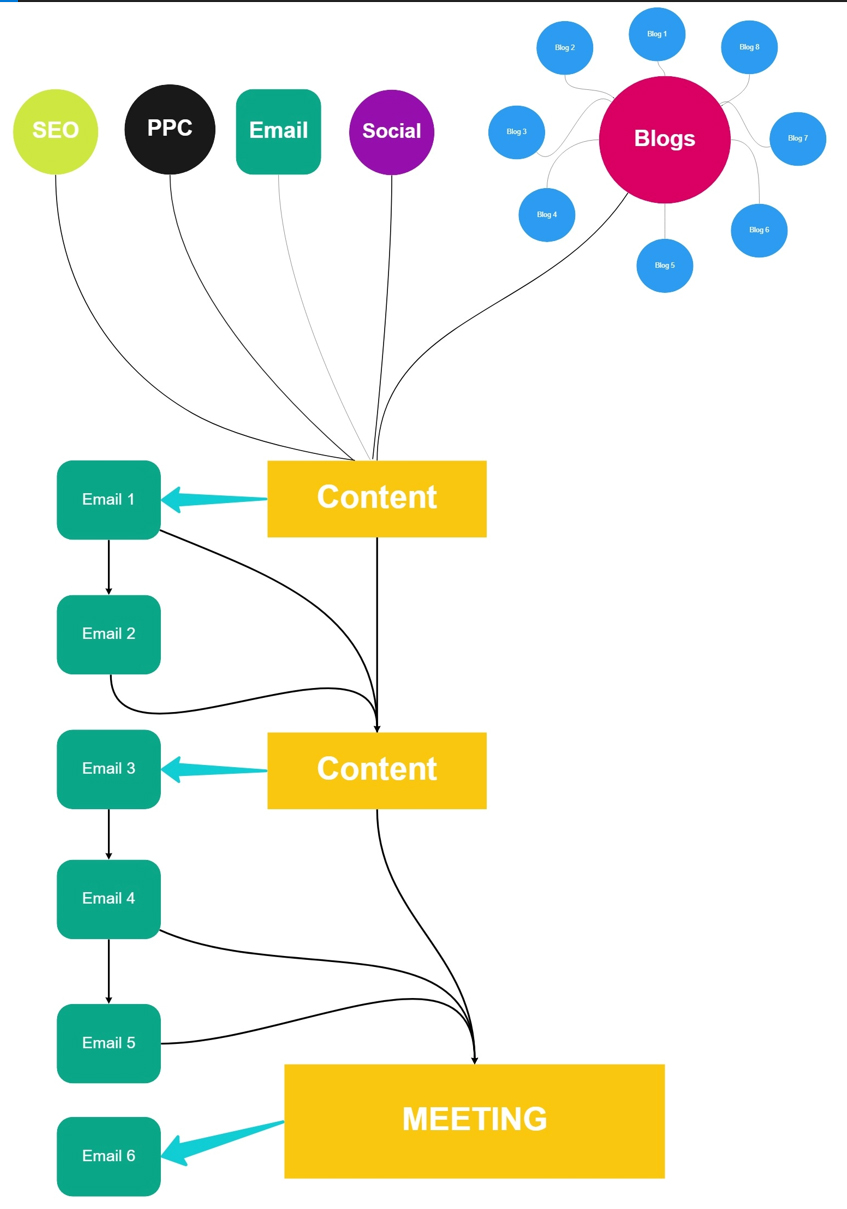What does HubSpot Marketing Software actually do?
To answer this question, we need to step back for a second and dig in to the ideas that underpin Inbound Marketing.
Some Background on Inbound Marketing
The basic truth of selling products or services is that you need to have the attention of the buyer at the exact time period they are ready to buy. Current research shows that in any given quarter, only around 5%of prospective buyers are “in market” (i.e., actively looking for products or services within a certain industry). That means the opposite is also true: 95% are not “in market”.
There are two basic marketing approaches to find these buyers who are ready to buy: Inbound and Outbound.
The Outbound approach involves sending out as many communications as possible to as many people as possible as often as possible. The idea is that your volume of communications is statistically likely to coincide with the 5% of “in market” prospects if you send out a mass of emails/texts/etc and do so often. The primary advantage of this approach is relatively lower short-term costs, relatively less expertise required, and relatively lower labor inputs. The downsides to this approach are pretty clear to all of us who have received spam from companies we’ve never heard of. There can be negative brand impacts, logistical complications from sending unsolicited communications, and ethical considerations to this method that can have long-lasting impacts.
The inbound approach, which we favor and employ successfully, involves finding and communicating with the total addressable market (the 95% referenced above) in advance of when prospects enter the market. We have a comprehensive, on-going strategy to find “in market” individuals which involves PPC, SEO, Blogging, and Social Media (see diagram at left).
Prospective buyers can remain “in market” for various amounts of time as they move through what is known as the Buyer or Customer Journey. Briefly, the stages of this journey are: 1) identifying a problem, 2) researching and comparing solutions, and 3) deciding on a solution. We make sure to deliver content that speaks to these various stages of the Customer Journey as prospective customers move through them.
We do this using HubSpot.
What is Hubspot?
HubSpot is an all-in-one Customer Relationship Management platform that gives businesses a single source of truth for marketing, sales, and service efforts, and also integrates with dozens of popular business software applications.
Think of it like a command center for your business, you get to create marketing content (social, paid, organic), sales playbooks and templates, service department surveys and customer engagement content, then send it out whenever you want, all from one place.
HubSpot gives you the tools to monitor how all of your efforts are reaching your prospects. You gain clarity through data with customized reports and dashboards in a centralized location.
Benefits of HubSpot:
- Hubspot is a single source of truth for content, analytics, and contacts
- HubSpot integrates with your website to give you actionable insights
- HubSpot’s Marketing Software delivers content to contacts at just the right time
- HubSpot integrates with your social media channels for easy management and tracking
- HubSpot offers powerful email marketing capabilities
- HubSpot has an abundance of third-party integrations
- HubSpot is great for lead reporting, lead tracking, and lead conversion
- Hubspot has free, comprehensive, accessible trainings to empower all users
- HubSpot has transparent reporting and tracking capabilities
- HubSpot connects your Revenue Departments (Marketing, Sales, Service)
The HubSpot Strategy: It’s all About the Customer Journey
A customer journey is the sum of all the interactions an individual has with your brand from the very first time they discover you to the time they become a delighted customer. The focus isn’t on the volume interactions, but rather on the quality (which–truth be told–can often lead to significant volume, just think about Apple for instance).
HubSpot is designed around this philosophy and taken as a whole, HubSpot is uniquely designed to put your best foot forward with customers as they learn about your solution to their problem (awareness), weigh your solution against competitors (consideration), buy your product (purchase), learn to use your product to its full potential and buy additional items (retention), and finally spread your good name to friends, family, and colleagues (advocacy).
The HubSpot Methodology: Inbound Marketing means Building Relationships, Not Cold Selling
At Forecast Sunny, we’re believers in the inbound marketing methodology, because it establishes a solid start to the customer journey and has positive effects on the relationship you start building early on.
But, as you may have heard us say before [link to “Marketing alone isn’t enough anymore”], marketing alone isn’t enough anymore if you want to realize the full potential of your business. The real power of HubSpot and everything we do lies in an approach known as RevOps. The customer journey is mapped out, planned for, analyzed and optimized over time to increase the efficiency of your processes, unite your revenue departments and ultimately increase your revenue stream.






